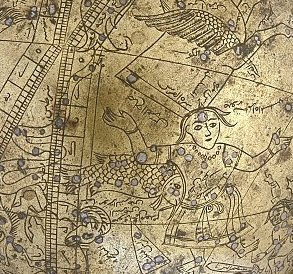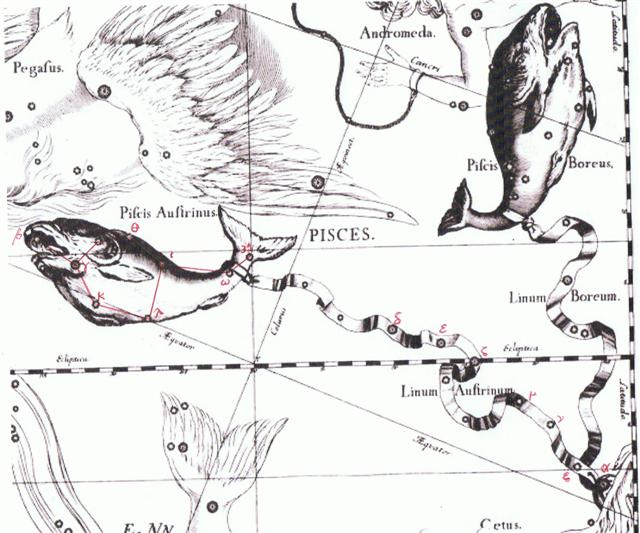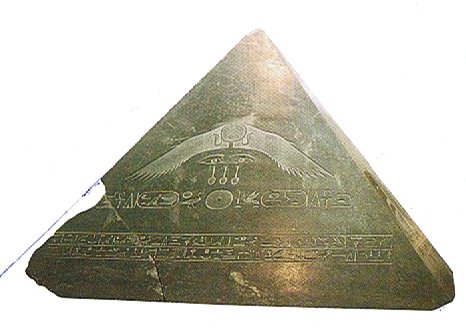To be formed in the topknot = tikitiki. In her old age Taranga formed Maui in her sacred topknot:
It could mean the Sun had been behind the head of Andromeda. ... When the new moon appeared women assembled and bewailed those who had died since the last one, uttering the following lament: 'Alas! O moon! Thou has returned to life, but our departed beloved ones have not. Thou has bathed in the waiora a Tane, and had thy life renewed, but there is no fount to restore life to our departed ones. Alas ... Or it could have referred to the star Alrisha (Knot). In rongorongo times Alrisha (α Piscium) rose with the Sun in April 19 and culminated at midnight in December 7, which was 232 (= 8 * 29) days later.
Although there was another famous Knot (Ukdah) which was beginning at glyph 78. In the center of this asterism Vega was culminating at midnight (with culminating Sirius at the opposite side of the year).
... On February 9 the Chorti Ah K'in, 'diviners', begin the agricultural year. Both the 260-day cycle and the solar year are used in setting dates for religious and agricultural ceremonies, especially when those rituals fall at the same time in both calendars. The ceremony begins when the diviners go to a sacred spring where they choose five stones with the proper shape and color. These stones will mark the five positions of the sacred cosmogram created by the ritual. When the stones are brought back to the ceremonial house, two diviners start the ritual by placing the stones on a table in a careful pattern that reproduces the schematic of the universe. At the same time, helpers under the table replace last year's diagram with the new one. They believe that by placing the cosmic diagram under the base of God at the center of the world they demonstrate that God dominates the universe. The priests place the stones in a very particular order. First the stone that corresponds to the sun in the eastern, sunrise position of summer solstice is set down; then the stone corresponding to the western, sunset position of the same solstice. This is followed by stones representing the western, sunset position of the winter solstice, then its eastern, sunrise position. Together these four stones form a square. They sit at the four corners of the square just as we saw in the Creation story from the Classic period and in the Popol Vuh. Finally, the center stone is placed to form the ancient five-point sign modern researchers called the quincunx ...
The top-knot should have been the central cardinal point. ... In Andean thought both world and time were divided into four sectors or directions unified under a presiding fifth principle. The Tawantinsuyu - 'the indivisible four quarters' - was unified and presided over by Cusco, the center. Similarly, history was divided into four previous ages, presided over by a fifth, the present. In his book, Waman Puma organizes the history of both Old and New worlds according to this scheme. The Old Testament and the pre-Inca times are each divided into four equivalent and parallel ages. The 'present' age in Peru begins with the appearance of Manku Qhapaq, the first Inca, a being of supernatural origin. And in the Old World the 'present' starts with the birth of Jesus Christ ...
|
|||||||||||||||||||||||||||||||||||||||||||||||||||||||||||||||||||||||||||||||||||||||||||||||||||||||||||||||||||||||||||||||||||||||||||||||||||||||||||||||||||||||||||||||||||||||||||||||||||||||||||||||||||||||||||||||||||||||||||||||||||||||||||











